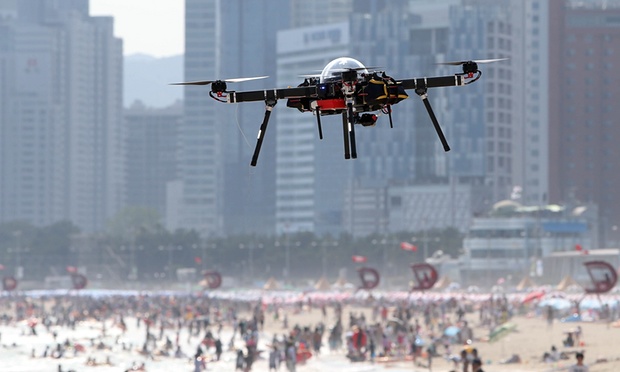
A sharp escalation in the use of drones will bring increasingly complex risks from cyberattack, reckless pilots and privacy issues, a new report from the Lloyd’s of London insurance market has warned. Spending on unmanned aerial vehicles is likely to double to more than $90bn by 2024, Lloyd’s predicted, but makers and users of the machines, as well as insurers, are relatively unprepared for the emerging consequences.
“Drone technology has significant potential, but is a particularly novel – and controversial – emerging technology. Insurance is expected to be a key component in the risk-management framework that will need to be developed for the systems to operate safely and with due regard to third-party interests,” it argues in the report “Drones take flight”.
“As the market for drones continues to expand, manufacturers can expect to face increasingly complex and high-value risk exposures. Protection of intellectual property and the management of product liability will also likely need to be considered in the scope of insurance cover.”
Drones have a controversial image because of their use by the military, but the technology is increasingly being expanded into a number of civil and commercial uses.
Put simply: drones sound like fun gizmos, until they’re falling on our heads or spying on us.
“This technology has immense power, but it has developed faster than regulations,” says Nick Beecroft, Lloyd’s of London’s manager of emerging risk and research. “Regulators and insurers don’t yet have comfort and clarity here. And no one wants a free-for-all.”
Beecroft says the explosion in drone is largely the result of huge drops in the cost of such tech. An app-controlled quad-copter capable of shooting 1080p video is $1,000, a fraction of what such machines cost even five years ago.
“The growth in maturity and affordability is incredible,” says Beecroft. “What’s needed is a sensible debate on the risk management of drones.”
Drones have quickly mushroomed from backyard hobbyist toys to powerful commercial tools. Unmanned aerial vehicle (UAV) expenditures over the next 10 years are expected to total $91 billion, according to the Teal Group. But the sector remains largely unregulated and potentially dangerous.